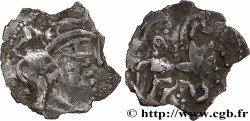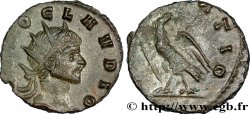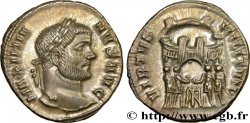Live auction - bga_934779 - GAUL, UNSPECIFIED Statère de Philippe II, imitation celtique type de “Montmorot”
You must signin and be an approved bidder to bid, LOGIN TO BID. Accounts are subject to approval and the approval process takes place within 48 hours. Do not wait until the day a sale closes to register. Clicking on "BID" constitutes acceptance of the terms of use of cgb.fr private live auctions.
Bids must be placed in whole Euro amounts only. The sale will start closing at the time stated on the item description; any bids received at the site after the closing time will not be executed. Transmission times may vary and bids could be rejected if you wait until the last second. For further information check the Live auction FAQ
All winning bids are subject to a 18% buyer’s fee.
All winning bids are subject to a 18% buyer’s fee.
| Estimate : | 7 000 € |
| Price : | no bid |
| Maximum bid : | no bid |
| End of the sale : | 24 September 2024 15:30:06 |
Type : Statère de Philippe II, imitation celtique type de “Montmorot”
Date: IIIe siècle avant J.-C.
Metal : gold
Diameter : 19 mm
Orientation dies : 7 h.
Weight : 8,33 g.
Rarity : R3
Coments on the condition:
Beau statère bien centré des deux côtés. Portrait de style fin au droit, bien venu à la frappe. Un petit coup est à noter à huit heures au droit, ainsi que sur l’aurige au revers. De fines rayures
Catalogue references :
Predigree :
Avec son certificat d’exportation n°249037 délivré par le Ministère français de la Culture
Obverse
Obverse legend : ANÉPIGRAPHE.
Obverse description : Tête laurée à droite, imitant la tête d’Apollon.
Reverse
Reverse description : Bige galopant à droite, les chevaux bondissant ; l'aurige, au-dessus de la roue du char, tient un fouet ; monogramme AP sous les chevaux.
Reverse legend : fILIPPoIU
Reverse translation : ( de Philippe).
Commentary
Ce statère est une dégénérescence du type d'Abydos, avec l'épi de blé en différent au revers (hors flan sur la grande majorité des imitations gauloises). L'attribution aux Helvètes est possible, mais pas certaine, pas plus que celle aux Arvernes ou bien encore une hypothétique attribution aux Carnutes. La concentration des trouvailles, pourtant dispersées, serait plutôt dans l'est de la France.








 Report a mistake
Report a mistake Print the page
Print the page Share my selection
Share my selection Ask a question
Ask a question Consign / sell
Consign / sell
 Full data
Full data














